#antzar eguna
Text
The game of the goose or goose pulling
It is said that the game of goose emerged in the Iberian Peninsula around the 12th century and from there it spread to Europe. Today, in the 21st century, it is still alive in many nations such as EH, Spain, France, Germany or the Netherlands. In fact, it was the Dutch who even brought it to North America, where it was also practiced from the 17th to the 19th century.
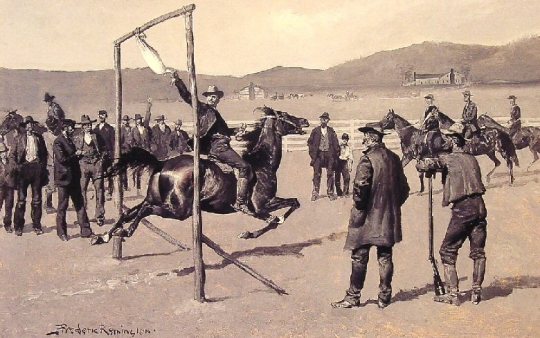
Goose pulling in West Virginia, 19th century
But what is the goose game?
First we have to know that in the Middle Ages, the goose was a symbol of everything bad: failure, plague, war, famine. Oppressed minorities such as agotes were forced to wear a red goose so that the rest would know of their pariah status. The game emerged in this symbolic context.
A live goose was tied by the legs, making it hang upside down from a rope or a pole. The initial objective was to destroy evil, and it is said that towns would pay knights to remove the head of the bird while galloping, either with their hands or with a staff.
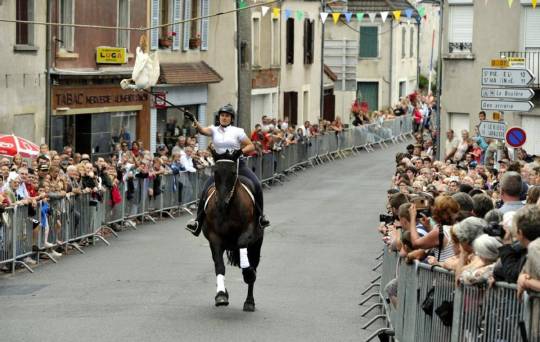
A game using a staff in Arfeuilles (France).
Little by little it evolved into a rite of passage from a child to an adult man, and no one was paid anymore, it was the young men of town who played. Needless to say, the one who actually got the head of the animal won. In EH, Pierre de Lancre banned it because he considered it was an initation to magic.
Of course the game was nothing but torture for the poor goose, so at the beginning of the 20th century it began to be considered cruel and, since its sense as rite of passage had been lost and it was only played during patron saint festivities, its popularity declined very quickly. Today, nowhere in Europe the game is played with live geese.
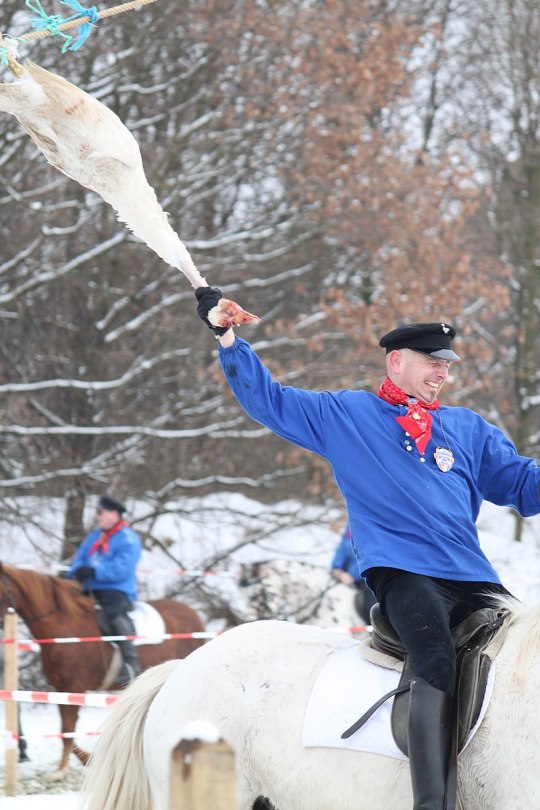

Geese pulling in Höntrop (Germany) and Markina (EH).
In EH the goose game is played every year in September and there are two types of goose pulling: the one practiced in Iparralde (in Sara, Ainhoa, Zuraide, Biriatu and Urruña) and Markina, and the one in Lekeitio, which is unique in Europe. While in Markina and Iparralde the classic game is played on horseback, in Lekeitio - known for its seafaring tradition - it is played from the water.
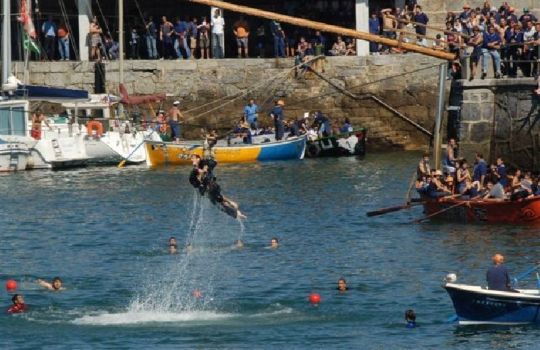
Only in this place in all of Europe the game is not played with real dead geese, but with plastic geese made specifically for the celebration.
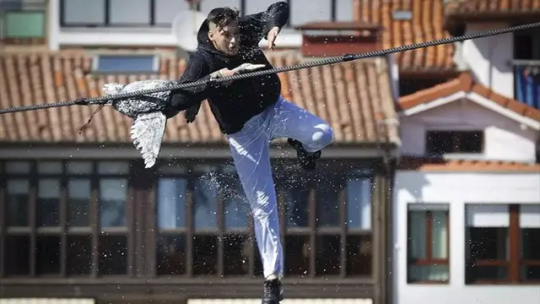
The plastic geese of Lekeitio.
Although played with dead animals everywhere but in Lekeitio - that rejected even dead geese and went for plastic ones -, it's still a controversial game. Should animals die specifically for a human game? Is it moral to destroy their bodies? Is it different from killing and cutting them up for consumption? I'd like to know your take on this ^_^
#euskal herria#basque country#pays basque#pais vasco#euskadi#culture#antzar eguna#goose pulling#game of goose#folklore#europe#lekeitio#iparralde#germany#netherlands#france#usa
28 notes
·
View notes
Photo

Antzar eguna #Lekeitio #humansofeuskadi #basque (en Lekeitio) https://www.instagram.com/p/BnZkpeVhUQr/?utm_source=ig_tumblr_share&igshid=17lof40yqy5m4
3 notes
·
View notes